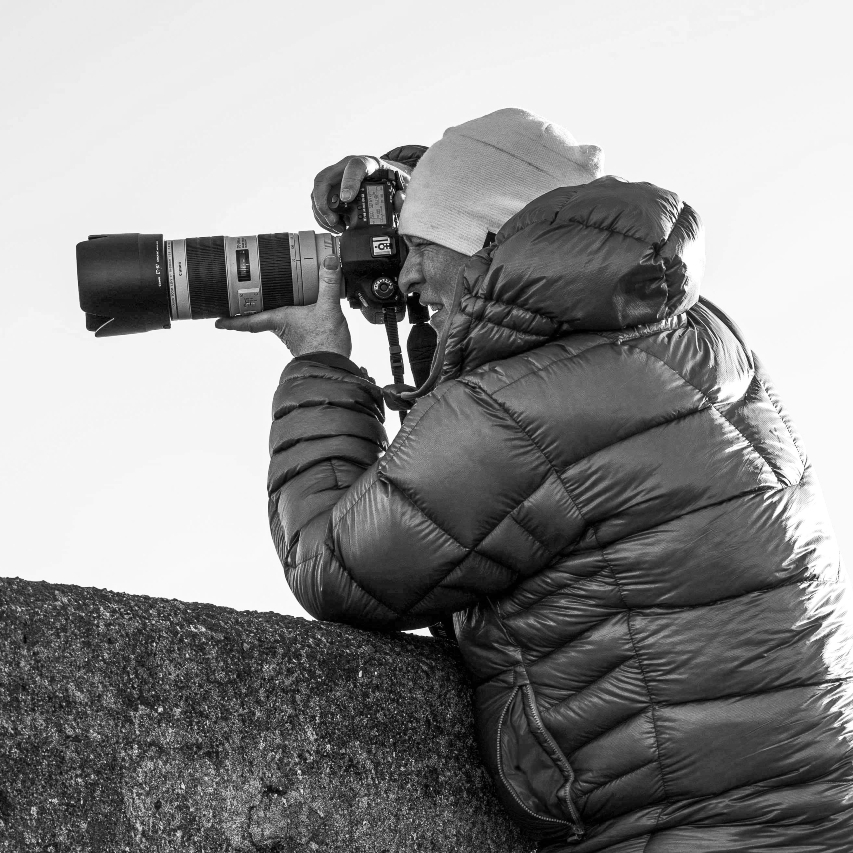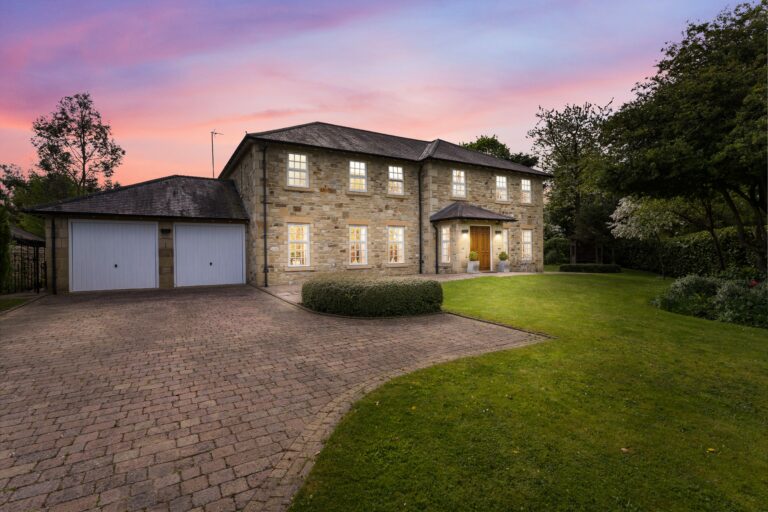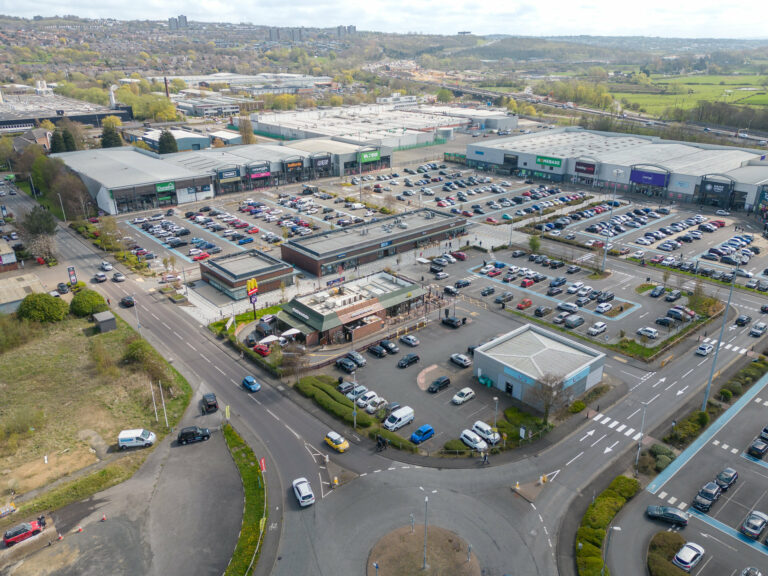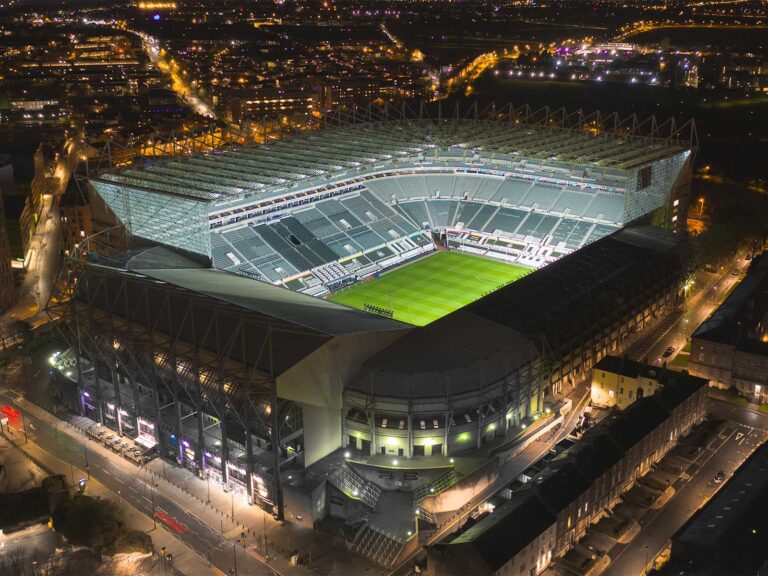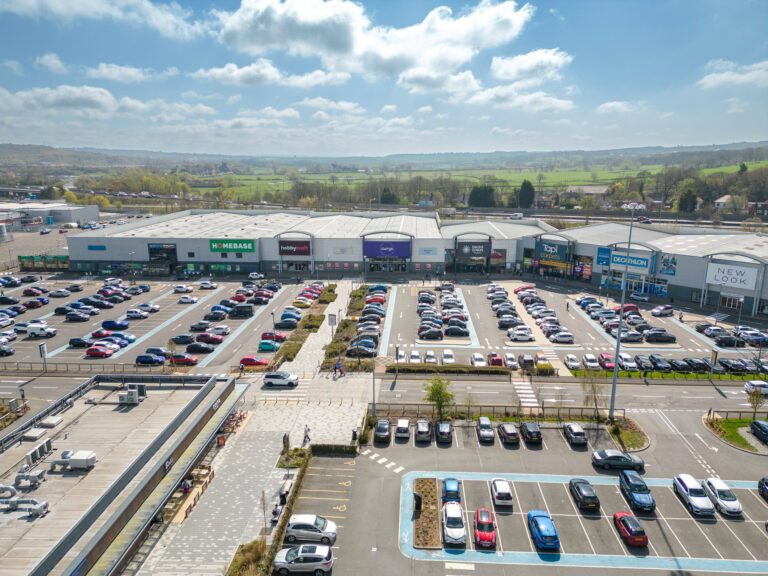In Focus: Why Commercial Photography Should Be Your Next Business Investment
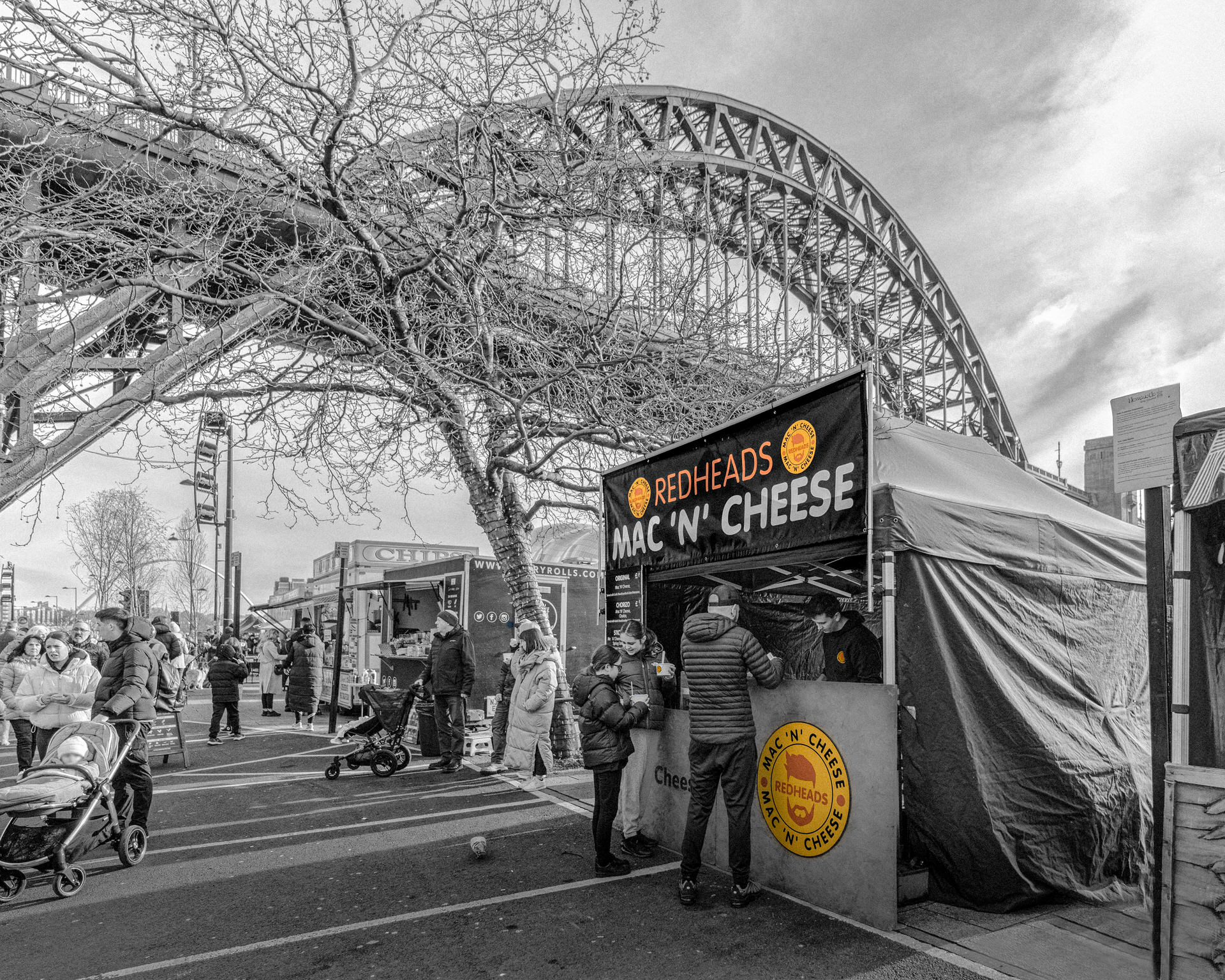
The Importance of Visual Content in Business
Visual content plays a crucial role in capturing the attention of customers and conveying the essence of your brand. In today’s highly visual world, businesses need to invest in compelling and high-quality imagery to stand out from the competition and leave a lasting impression on their target audience.
How Can Commercial Photography Enhance Your Business?
Commercial photography offers a range of benefits for businesses looking to elevate their visual content. It goes beyond just capturing images; it aims to create a strong visual narrative that effectively communicates your brand message and values. With commercial photography, you can showcase your products, services, or brand in a professional and visually appealing manner, building trust and connecting with your audience on a deeper level.
Benefits of Hiring a Professional Commercial Photographer
1. Professional Quality Images: A professional commercial photographer has the skills, experience, and technical knowledge to capture high-quality images that showcase your products or services in the best possible light. These images are essential for creating a positive and memorable brand image.
2. Brand Consistency and Identity: A professional commercial photographer understands the importance of brand consistency. They can create a visual style that aligns with your brand identity, ensuring that your imagery reflects your unique values and appeals to your target market.
3. Customized Visuals for Marketing: Commercial photographers work closely with businesses to create customized visual content that supports their marketing goals. Whether it’s product photography, architectural photography, or fashion photography, they can tailor their photography style to suit your specific needs and help you stand out in your industry.
Types of Commercial Photography
Commercial photography encompasses various types, each serving a specific purpose for businesses:
1. Product Photography: This type of photography focuses on capturing products in a visually appealing way, highlighting their features, and enticing potential customers to make a purchase.
2. Architectural Photography: Architectural photography involves capturing buildings, interiors, and exteriors, showcasing the design, structure, and unique aspects of architectural projects.
3. Fashion Photography: Fashion photography captures clothing, accessories, and models in a way that showcases the style, creativity, and quality of the fashion brand.
Choosing the Right Commercial Photographer for Your Business
When selecting a commercial photographer for your business, consider the following factors:
1. Portfolio and Experience: Review the photographer’s portfolio to ensure they have experience in the specific type of photography you require. Look for consistency, quality, and a style that aligns with your vision.
2. Understanding Your Specific Brand: A good commercial photographer takes the time to understand your brand, target audience, and marketing goals. They should be able to translate your brand values into captivating imagery.
3. Budget and Pricing: Discuss your budget with potential photographers and ensure they can provide you with a quote that fits within your financial constraints. Remember that investing in high-quality commercial photography is a long-term investment that will benefit your business in the long run.
Measuring the Success of Commercial Photography
To measure the success of your commercial photography investment, analyze its impact on your business by tracking key metrics such as increased website traffic, engagement on social media, conversion rates, and customer feedback. By monitoring these metrics, you can assess the effectiveness of your commercial photography in attracting customers and achieving your business goals.
The Importance of Visual Content in Business
Visual content plays a vital role in the success of a business. It captures attention, enhances brand recognition, and effectively communicates messages. High-quality visuals leave a lasting impression on customers, stimulate engagement, and boost conversion rates. Research indicates that articles with relevant images receive 94% more views compared to those without. Visual content is also shared more frequently on social media platforms, which helps expand the reach of a brand. Infographics, videos, and photographs convey information quickly and concisely, increasing comprehension and retention among customers. In today’s digital age, where attention spans are short, visual content stands out and grabs viewers’ attention. It helps cultivate trust and authenticity in a brand, facilitating strong connections with customers. Images are a powerful tool for storytelling, evoking emotions, and conveying the core values of a business. By consistently incorporating visual content, businesses can differentiate themselves from competitors and establish a compelling brand identity. The importance of visual content in business cannot be overstated. It is an essential investment that yields tangible results, driving brand awareness, customer engagement, and ultimately, business growth.
How Can Commercial Photography Enhance Your Business?
Commercial photography can greatly enhance your business by capturing high-quality visuals that effectively communicate your brand identity, products, and services. Here are key ways in which it can benefit your business:
- Enhance brand recognition: Professional commercial photography ensures that your brand is visually represented with consistency and professionalism across all marketing materials. This fosters recognition and establishes credibility.
- Grab attention and engage customers: High-quality images have the power to attract and captivate your target audience. By showcasing your products or services in a visually appealing manner, commercial photography helps generate interest, enticing potential customers to explore further.
- Convey professionalism and trustworthiness: Investing in professional commercial photography conveys a sense of professionalism, instilling confidence in customers. Professional images imply a commitment to quality in your offerings, making customers more likely to trust and choose your business.
- Increase sales and conversions: Compelling visuals greatly influence consumer purchasing decisions. By showcasing products or services in an appealing and persuasive way, commercial photography can boost sales and conversions, ultimately driving revenue growth.
- Amplify brand storytelling: Visual storytelling is a powerful tool in marketing. Professional commercial photography enables you to tell your brand’s story effectively, evoking emotions and forging connections with your target audience.
Commercial photography is a valuable investment for businesses looking to enhance their visual communication, build brand recognition, and drive growth. By harnessing the power of high-quality visuals, businesses can create a lasting impact and stay ahead in today’s competitive marketplace.
Benefits of Hiring a Professional Commercial Photographer
When it comes to commercial photography, hiring a professional photographer can have several benefits for your business:
- High-quality images: A professional commercial photographer has the expertise and equipment to capture high-quality images that showcase your products or services in the best light. These images can help attract customers and create a positive impression of your brand.
- Enhanced brand image: With their knowledge of lighting, composition, and visual storytelling, professional photographers can create visual content that aligns with your brand’s identity and values. This can help cultivate a strong and consistent brand image.
- Capturing the right emotions: Professional photographers understand how to capture the desired emotions and convey the right message through their images. They can bring out the essence of your products or services, evoking the desired emotional response from your target audience.
- Increased engagement: Compelling and visually appealing images have the power to grab attention and engage viewers. By hiring a professional commercial photographer, you can create visual content that stands out and captures the interest of your target audience, ultimately increasing engagement with your brand.
- Time and cost savings: While it may seem more cost-effective to DIY your commercial photography, hiring a professional photographer can save you time and money in the long run. They have the skills and experience to efficiently execute the project, ensuring you get high-quality images without unnecessary delays or expenses.
Considering these benefits, it is clear that hiring a professional commercial photographer is a worthwhile investment for your business. They can help you create visually stunning and impactful images that contribute to the success and growth of your brand.
Types of Commercial Photography
Looking to engage your audience and elevate your brand’s image? Look no further than commercial photography. This section explores the different types of commercial photography that can give your business the competitive edge it needs. From capturing the essence of your products through product photography to showcasing stunning architectural designs and enticing fashion photography, each sub-section highlights how these photography genres can create powerful visual narratives for your brand. It’s time to make an impact and leave a lasting impression on your customers!
Product Photography
Product photography is essential for businesses looking to present their products in the best possible way. High-quality images can have a significant impact on consumer perception and influence purchasing decisions. When considering product photography, there are several important factors to keep in mind.
Table:
| Factors to Consider in Product Photography |
| 1. Lighting |
| 2. Background |
| 3. Composition |
| 4. Props and Styling|
| 5. Product Details |
| 6. Creating a Mood |
| 7. Consistency |
- Lighting: Proper lighting is crucial to accurately highlight the features and details of the product. Depending on the desired effect, natural light or studio lighting setups can be used.
- Background: The background should be clean, uncluttered, and free from distractions, allowing the product to be the focal point. Different backgrounds can be used to enhance the visual appeal of the product.
- Composition: The composition should be well-balanced and visually pleasing. It involves arranging the product, props, and other elements in a way that showcases its best side.
- Props and Styling: Props can be strategically used to enhance the product and create a lifestyle context. Careful consideration should be given to ensure that props do not overshadow the main product.
- Product Details: Close-up shots should highlight the unique features, textures, and finishes of the product, providing potential customers with a clear and detailed view.
- Creating a Mood: The style and mood of product photography should align with the brand image and target audience. This can be achieved through the use of appropriate lighting, colour schemes, and other visual elements.
- Consistency: Consistent product photography across all platforms and channels helps to maintain brand identity and build customer trust.
By considering these factors and investing in professional product photography, businesses can effectively showcase their products, attract customers, and drive sales.
Architectural Photography
Architectural photography is a vital aspect of commercial photography that focuses on capturing the beauty and intricacies of buildings and structures. Skilled architectural photographers can showcase the architectural design, lighting, and details of various structures.
Architectural photography offers numerous benefits to businesses looking to enhance their visual content. It can create visually appealing images that showcase the unique features and aesthetics of architectural designs. These images can be used for marketing materials, websites, social media, and advertising campaigns to attract potential clients.
When hiring a professional commercial photographer for architectural photography, it is essential to consider their portfolio and experience in capturing architectural subjects. A photographer with a strong background in this genre will have the necessary skills and techniques to photograph buildings from the best angles and highlight their architectural beauty.
Understanding the specific brand and vision of your business is crucial when selecting an architectural photographer. It ensures that the photographer aligns their work with your brand identity and effectively communicates the desired message through the images.
Budget and pricing are also important factors to consider. Different photographers offer varying rates based on their expertise and experience. It is vital to find a balance between quality and affordability to ensure you get the best value for your investment.
Architectural photography is an essential element of commercial photography that can enhance businesses’ visual content. By hiring a professional photographer with experience in this field and aligning their work with your brand, you can capture stunning images that effectively showcase your architectural designs.
Fashion Photography
Fashion Photography
- Fashion photography is a type of photography that focuses on capturing clothing, accessories, and fashion trends.
- It is commonly used for advertising campaigns, fashion magazines, and editorial spreads.
- Fashion photographers have a sharp eye for detail and are skilled at creating visually appealing images that showcase clothing and accessories in the best possible way.
- They work closely with stylists, makeup artists, and models to create a coherent and captivating image.
- Lighting plays a crucial role in fashion photography, as it helps to highlight the texture, colour, and details of the garments.
Did you know? Fashion photography has a rich history that dates back to the early 20th century. It has evolved over the years, reflecting changes in fashion trends, societal norms, and artistic styles. Today, fashion photography continues to be a dynamic and influential aspect of the fashion industry, showcasing the creativity and talent of photographers and designers alike.
Choosing the Right Commercial Photographer for Your Business
Looking to make a wise investment for your business? Let’s explore how to choose the right commercial photographer for your business. We’ll uncover the key factors that will help you decide which photographer suits your unique requirements. From evaluating their portfolio and experience to aligning with your brand’s vision, and even considering your budget and pricing, we’ll explore all the essential aspects of finding the right commercial photographer for your business. Let’s capture success together!
Portfolio and Experience
When selecting the ideal commercial photographer for your business, it is crucial to consider their portfolio and experience. Here are some important points to bear in mind:
- Portfolio: Take the time to thoroughly review the photographer’s portfolio. Look for images that align with your brand and style. Pay attention to the quality of the images, composition, lighting, and overall creativity.
- Experience: Consider the photographer’s experience in commercial photography. Have they worked with businesses similar to yours? Do they have a track record of delivering high-quality images that meet the client’s objectives?
- Specialisations: Some photographers may specialise in specific types of commercial photography, such as product photography, architectural photography, or fashion photography. Understand your specific needs and choose a photographer who has expertise in that area.
- Clientele: Look for photographers who have worked with reputable clients or have been published in well-known publications. This demonstrates their credibility and ability to meet the expectations of high-profile clients.
- Recommendations and reviews: Seek recommendations from other businesses or professionals in your industry. Read reviews and testimonials about the photographer’s work and professionalism.
- Communication and collaboration: When reviewing a photographer’s portfolio and experience, consider how well they communicate and work collaboratively. Clear communication and a good working relationship are key to a successful partnership.
By considering these factors, you can confidently select a commercial photographer who has a strong portfolio and extensive experience, ensuring that they are the right fit for your business’s visual content needs.
Understanding Your Specific Brand
Understanding Your Specific Brand is essential when selecting a commercial photographer for your business. A professional photographer should possess a comprehensive understanding of your brand’s identity, values, and target audience. They should be capable of capturing the essence of your brand and conveying it visually through their photography.
To gain a true understanding of your specific brand, a commercial photographer should invest time in researching and immersing themselves in your brand’s story, mission, and unique selling points. They should be well-acquainted with your brand’s visual style and have the ability to adapt their photography to align with it. This level of understanding ensures that the photographer can create images that accurately reflect your brand’s personality and resonate with your audience.
A real-life example that highlights the significance of comprehending your specific brand is that of a fashion retailer who hired a commercial photographer without thoroughly discussing their brand identity. The photographer’s style clashed with the brand’s image, resulting in photos that failed to appeal to their target audience. Consequently, the retailer had to invest in a new photoshoot, leading to additional costs and delays in their marketing campaigns.
When selecting a commercial photographer, it is crucial to ensure that they possess a clear understanding of your specific brand. This will guarantee that their photography accurately represents your brand’s identity and resonates with your target audience.
Budget and Pricing
When it comes to budgeting and pricing for commercial photography, it is important to consider factors such as the scope of the project, the experience and expertise of the photographer, and the desired outcome.
Here is a breakdown of the key considerations:
| Factors to Consider | Details |
| Project Scope | Consider the complexity and scale of the project. Larger projects with multiple locations or extensive post-production work may require a higher budget. |
| Photographer’s Experience | The level of expertise and experience of the photographer can impact pricing. Highly skilled and experienced photographers often charge a premium for their services. |
| Desired Outcome | Consider the purpose and usage of the photographs. If the images are intended for high-end advertising campaigns or large-scale prints, it may require a higher budget. |
| Additional Services | Additional services such as retouching, licensing, and usage rights may incur additional costs. Ensure that these details are discussed and included in the pricing. |
| Market Rates | Research the prevailing market rates for commercial photography in your area. This will help you determine a fair and competitive budget. |
| Negotiation | Discuss your budget constraints with the photographer. They may be able to offer alternative solutions or package deals to accommodate your needs. |
Remember, investing in high-quality commercial photography can have a significant impact on your business’s visual content and marketing efforts. It is crucial to allocate a realistic budget that aligns with your goals and ensures the best possible outcome.
Measuring the Success of Commercial Photography
Measuring the success of commercial photography involves assessing key metrics to determine its effectiveness and impact. One important factor to consider is the return on investment (ROI). By comparing the cost of the photography campaign with the resulting profits or benefits, businesses can gauge the financial success. Another metric to evaluate is the reach and engagement of the photographs. Tracking views, likes, comments, and shares on social media platforms can provide insights into the level of audience interest and interaction. Conversion rates can indicate the effectiveness of the photographs in driving desired actions, such as increasing website visits or generating sales. It is important to analyze the demographics and preferences of the target audience to ensure that the photography aligns with their interests and resonates with them. Client feedback and testimonials are valuable indicators of satisfaction and the impact of the photographs on their business. By incorporating these various measurements, businesses can accurately assess the success of their commercial photography and make informed decisions for future investments.
How Can You Analyze the Impact of Commercial Photography on Your Business?
Analyzing the impact of commercial photography on your business is crucial to determine its effectiveness and return on investment. Here are some ways to assess its impact:
- Track conversions: Monitor how commercial photography influences your website’s performance by analyzing conversion rates. Look at the number of visitors who take the desired action, such as making a purchase or filling out a contact form. Compare this data before and after incorporating commercial photography to determine its impact on conversions.
- Measure engagement: Assess the level of customer engagement with your business by evaluating metrics such as likes, shares, comments, and click-through rates on social media platforms or email campaigns. Commercial photography can significantly enhance the visual appeal of your content and encourage users to engage with your brand.
- Analyze sales data: Analyze sales figures and revenue generated after implementing commercial photography in your marketing materials. Compare sales data from previous periods without commercial photography to determine its impact on sales performance.
- Conduct customer surveys: Gather feedback from customers to understand their perception and response to your commercial photography. Ask specific questions about whether the photography influenced their decision to purchase or enhanced their overall experience with your brand.
- Monitor brand recognition: Track brand recognition and recall to assess if commercial photography has helped in increasing brand visibility. Measure metrics such as website traffic, social media followers, and mentions in online publications to gauge the impact of commercial photography on your brand’s visibility.
By analyzing these aspects, you can gain valuable insights into the impact of commercial photography on your business and make informed decisions regarding its future use in your marketing strategies.
- About the Author
- Latest Posts
Garry Bell is the owner and award-winning lead photographer at Elemental Photography, based in Newcastle Upon Tyne, North East of England. With a rich portfolio that spans promotional, aerial, and property photography, as well as 360° virtual tours, Garry and his team offer a comprehensive suite of services that cater to a diverse range of sectors including hotels, holiday homes, and leisure complexes, both in the UK and Europe. Certified by the U.K. Civil Aviation Authority for commercial drone work, Garry leverages the latest technology, including high-quality Sony equipment, to capture stunning visuals. A CAA-approved drone pilot, he embodies a commitment to safety and legality in all operations, ensuring a professional and reliable service.

